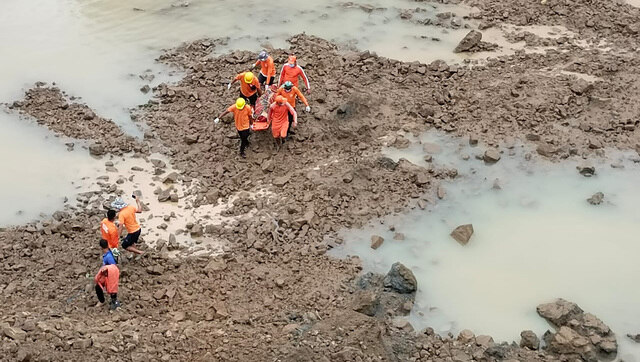As heavy rains battered the coastal state of Karnataka, at least three people died in instances of landslides. In a similar instance of landslide, one of the worst-ever in the country , at least 47 people have been confirmed dead in Manipur, while 14 more are still missing from the incident site. Landslides caused by incessant rains have also been reported from at least areas in Maharashtra. At Ghatkopar in Mumbai’s suburbs , a house was damaged due to a landslide and other six houses were reportedly damaged in landslides in Ratnagiri district. Every year as the monsoon covers the country, landslides at several places become almost regular. While some places like Assam face nature’s wrath more severely, others are saved by a whisker from major damage to life and property. Let’s understand what are landslides and what causes them: What is a landslide? According to the United States Geological Survey (USGS), a landslide is defined as the movement of a mass of rock, debris, or earth down a slope. Landslides are a type of “mass wasting,” which denotes any down-slope movement of soil and rock under the direct influence of gravity. The term “landslide” encompasses five modes of slope movement: falls, topples, slides, spreads, and flows. These are further subdivided by the type of geologic material (bedrock, debris, or earth). Debris flows (commonly referred to as mudflows or mudslides) and rock falls are examples of common landslide types. The National Disaster Management Authority explained the occurrence with the help of an illustration on Twitter.
Do you know How #landslides occur?#KeralaLandslide#KeralaRains pic.twitter.com/PCBHU0Ukjz
— NDMA India | राष्ट्रीय आपदा प्रबंधन प्राधिकरण 🇮🇳 (@ndmaindia) October 17, 2021
The NDMA diagram mentions seven ways in which a landslide can occur. Most of these are caused as a result of heavy rain or flooding. In mountainous regions, landslides can occur due to snowmelt, falling of rocks and debris. Earthquakes, volcanic activity, disturbance by human activities, or any combination of these factors can also induce landslides. Why are there more landslides during monsoon? One of the foremost reasons is concentrated rainfall due to climate change, experts say. In Assam’s case this year, the state received 65 per cent excess rain from 1 March to 20 May, as reported by The Indian Express. The neighbouring state of Meghalaya recorded an even greater excess of 137 per cent. Dr DC Goswami, an eminent environmentalist and a retired professor of hydrology from the Gauhati University attributes the changes in rainfall intensity, arrival and departure times to climate change. “Normally we have rains coming in June and July when we experience big floods,” he said. It is due to such heavy rains and flooding that landslides and mudslides occur. Several incidents of landslides were reported from south Assam’s Dima Hasao and Cachar districts. The New Halflong railway station was also severely damaged as bogies of a train overturned under the force of landslide-induced debris. When heavy rains meet “undesirable, unpragmatic, unplanned structural intervention on the fragile landscape of hills”, it can cause landslide, said Partha Jyoti Das, who heads the Water, Climate and Hazard Division of the Guwahati-based environment non-profit Aaranyak, as reported by The Indian Express. Deforestation for public and private infrastructure projects leaves the soil weak and vulnerable to spate of water coming from a higher level. Whether it is an extension of a railway line, or construction of a bridge or roads, the fragile ecosystem of mountainous areas is disturbed. Similarly in Manipur, experts believe the geological weakness of the soil, lack of vegetation, prolonged human pressure and incessant rain are the major factors for the landslide. “Apart from weakness of the soil due to prolonged exposure, rainfall and anthropogenic (human) pressure factors, the way the people used the land is also responsible for this tragedy,” N Deva Singh from the department of geography at Manipur University, Imphal, DownToEarth reported. S Ibotombi from the department of earth sciences at Manipur University said almost all landslides in the hilly states of North East India have been caused due to weak lithology, intense fracturing of rocks, steep slopes, thick mantle of waste and excessive rainfall in short duration. With inputs from agencies Read all the Latest News , Trending News , Cricket News , Bollywood News , India News and Entertainment News here. Follow us on Facebook, Twitter and Instagram.


)

)
)
)
)
)
)
)
)



